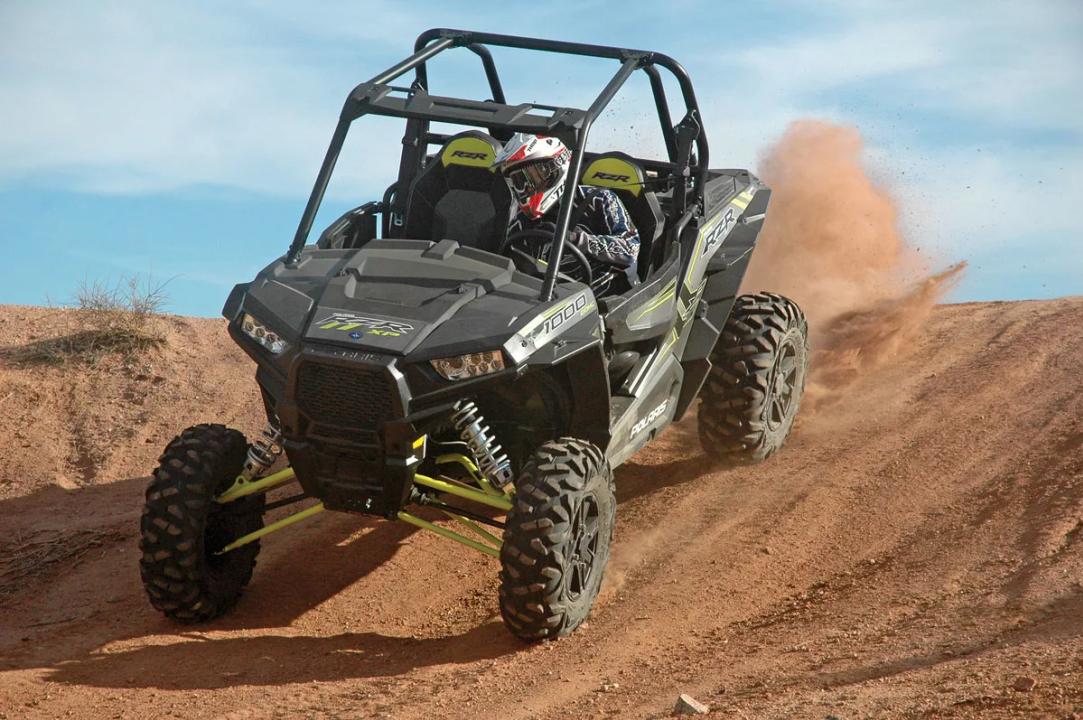When it comes to maintaining or repairing your Polaris ATV, UTV, or snowmobile, you might wonder whether using genuine Polaris parts is truly necessary. After all, aftermarket options are often more affordable, so why not go for the cheaper route? The decision to use OEM (Original Equipment Manufacturer) parts versus aftermarket parts can have a significant impact on your vehicle's performance, longevity, and even safety.
In this guide, we’ll explore the differences between genuine Polaris parts and aftermarket alternatives, and help you decide which is the best choice for maintaining and repairing your Polaris vehicle.
1. What Are Genuine Polaris Parts (OEM)?
Genuine Polaris parts, also referred to as OEM parts, are parts made by Polaris specifically for Polaris vehicles. These parts are designed, tested, and manufactured to meet the original specifications of your ATV, UTV, or snowmobile. When you buy a genuine Polaris part, you’re essentially getting the exact same part that was originally installed on your vehicle when it rolled off the production line.
Benefits of Using Genuine Polaris Parts:
- Perfect Fit and Compatibility: Since OEM parts are made by Polaris for Polaris vehicles, you can be confident they’ll fit perfectly without any modifications.
- High Quality and Reliability: OEM parts go through rigorous testing and quality control to ensure they meet Polaris’s standards for durability and performance.
- Warranty Coverage: Most Polaris parts come with a manufacturer’s warranty, offering you peace of mind if something goes wrong.
- Maintains Resale Value: Using genuine parts ensures your vehicle retains its original factory specifications, which can help maintain its resale value.
2. What Are Aftermarket Parts?
Aftermarket parts are parts made by third-party manufacturers. These parts are often designed to be compatible with a wide range of brands and models, not just Polaris vehicles. While aftermarket parts can sometimes offer comparable performance, their quality and reliability can vary significantly depending on the brand and the specific part.
Benefits of Using Aftermarket Parts:
- Cost Savings: Aftermarket parts are often less expensive than genuine Polaris parts, making them an appealing option for budget-conscious riders.
- Variety of Options: Aftermarket manufacturers often offer a broader selection of parts, including performance upgrades or specialized components not available through Polaris.
- Availability: Because aftermarket parts are made by numerous companies, they’re often widely available and easy to source, especially if you need a replacement part quickly.
3. Comparing OEM vs. Aftermarket Parts
The decision to use genuine Polaris parts or aftermarket alternatives comes down to several key factors: quality, performance, price, and intended use. Let’s break down how these two types of parts compare in the most important categories.
Quality and Durability
OEM Parts: Polaris parts are specifically designed for your model, so they meet the exact engineering standards set by the manufacturer. This ensures a high level of quality and durability. They’re built to last and handle the kind of stress your vehicle endures in real-world conditions.
Aftermarket Parts: The quality of aftermarket parts can vary widely. While some brands produce high-quality parts that rival OEM, others may cut corners on materials or design, which can result in less durability and a shorter lifespan.
Performance
OEM Parts: Because Polaris parts are made for specific Polaris models, they are guaranteed to deliver factory-level performance. You know exactly what you're getting with OEM parts, and there’s no guesswork in whether they’ll perform as expected.
Aftermarket Parts: Performance can be hit or miss. Some aftermarket parts may enhance your vehicle's performance, especially in the case of performance upgrades like exhaust systems, air filters, or suspension components. However, low-quality aftermarket parts may not perform as well as the original.
Price
OEM Parts: Genuine Polaris parts tend to be more expensive due to their higher quality, rigorous testing, and the backing of the Polaris brand.
Aftermarket Parts: Generally, aftermarket parts are cheaper, but there’s a tradeoff. While you can save money upfront, lower-quality parts may require more frequent replacements, which could end up costing you more in the long run.
Warranty
OEM Parts: Polaris OEM parts typically come with a manufacturer’s warranty, meaning you’re covered if the part fails prematurely. This can be a big advantage if you want peace of mind.
Aftermarket Parts: Most aftermarket parts don’t come with the same level of warranty protection. Some may offer limited warranties, but these vary by manufacturer, and coverage is often less comprehensive.
Fit and Compatibility
OEM Parts: Since Polaris parts are designed specifically for Polaris models, you can trust they’ll fit without any modifications. They’re built to the exact specifications of your vehicle.
Aftermarket Parts: Compatibility is where aftermarket parts can sometimes fall short. While many aftermarket parts are labeled “universal” or “compatible with Polaris,” they might not fit perfectly or require adjustments to install.
4. When Should You Choose Genuine Polaris Parts?
There are certain scenarios where sticking with genuine Polaris parts is your best option, especially if you prioritize long-term reliability, safety, and performance.
When to Choose OEM Parts:
Critical Components: For important parts like the engine, brakes, suspension, or electrical system, using genuine Polaris parts ensures your vehicle performs safely and efficiently. These components are crucial to the operation and safety of your vehicle, and OEM parts provide the reliability you need.
Warranty Preservation: If your Polaris is still under warranty, using aftermarket parts can void the warranty in some cases. To avoid this, it’s best to stick with OEM parts during the warranty period.
Resale Value: If you plan to sell your Polaris in the future, having a record of using genuine parts can help maintain or even boost the resale value. Buyers tend to trust vehicles that have been maintained with original manufacturer parts.
5. When Are Aftermarket Parts a Good Option?
That said, aftermarket parts can be a viable option in certain situations, particularly if you’re looking to save money or make performance upgrades.
When to Choose Aftermarket Parts:
Non-Critical Components: For non-essential parts like body panels, cosmetic accessories, or mirrors, using aftermarket parts can be a good way to save money without affecting the vehicle’s performance or safety.
Performance Upgrades: If you’re looking to boost performance, aftermarket parts like high-performance exhaust systems, air filters, or custom suspension systems can offer more variety and better performance than OEM parts in some cases.
Budget Constraints: If you’re on a tight budget and need to get your vehicle back on the trail quickly, certain aftermarket parts can offer a more affordable solution without compromising too much on quality—just make sure to research the brand and reviews carefully.
6. Where to Buy Genuine Polaris Parts
If you decide to go with OEM parts, it’s essential to buy them from reputable sources to ensure you’re getting genuine products. Here’s where to find authentic Polaris parts:
Best Places to Buy Genuine Polaris Parts:
Official Polaris Dealerships: Your local Polaris dealership is the most reliable place to buy OEM parts. They will ensure you’re getting exactly what you need for your specific model.
Polaris’s Official Website: Polaris’s website allows you to order parts online directly from the manufacturer.
Authorized Online Retailers: Some online retailers specialize in genuine Polaris parts. Make sure they are authorized dealers to avoid counterfeit or low-quality parts.
FAQs
Q: Will using aftermarket parts void my Polaris warranty?
A: In some cases, yes. If your vehicle is still under warranty, using aftermarket parts may void the warranty on certain components. It’s always best to check with Polaris or your dealership before installing aftermarket parts.
Q: Are aftermarket parts as reliable as OEM parts?
A: The reliability of aftermarket parts varies. High-quality aftermarket brands can offer performance and durability similar to or better than OEM parts, but cheaper options may not last as long or perform as well.
Q: Can I mix aftermarket parts with OEM parts?
A: Yes, you can mix aftermarket and OEM parts, but it’s important to ensure that any aftermarket parts are compatible with your Polaris vehicle to avoid performance issues or damage.
Visit Website: https://matadorpowersports.com/inventory/
Final Thoughts
When it comes to maintaining or repairing your Polaris, using genuine Polaris parts (OEM) ensures you’re getting parts designed specifically for your vehicle. These parts provide the best fit, quality, and reliability. However, aftermarket parts can be a great alternative for non-critical components or performance upgrades, especially if you're looking to save some money.
Ultimately, the decision comes down to your needs, budget, and the specific part you’re replacing. For critical components and long-term peace of mind, OEM parts are usually the best bet, while aftermarket parts offer flexibility and cost savings for less essential repairs.
Read More: https://www.promoteproject.com/article/174842/which-is-better-for-rocky-terrain-atv-or-utv









